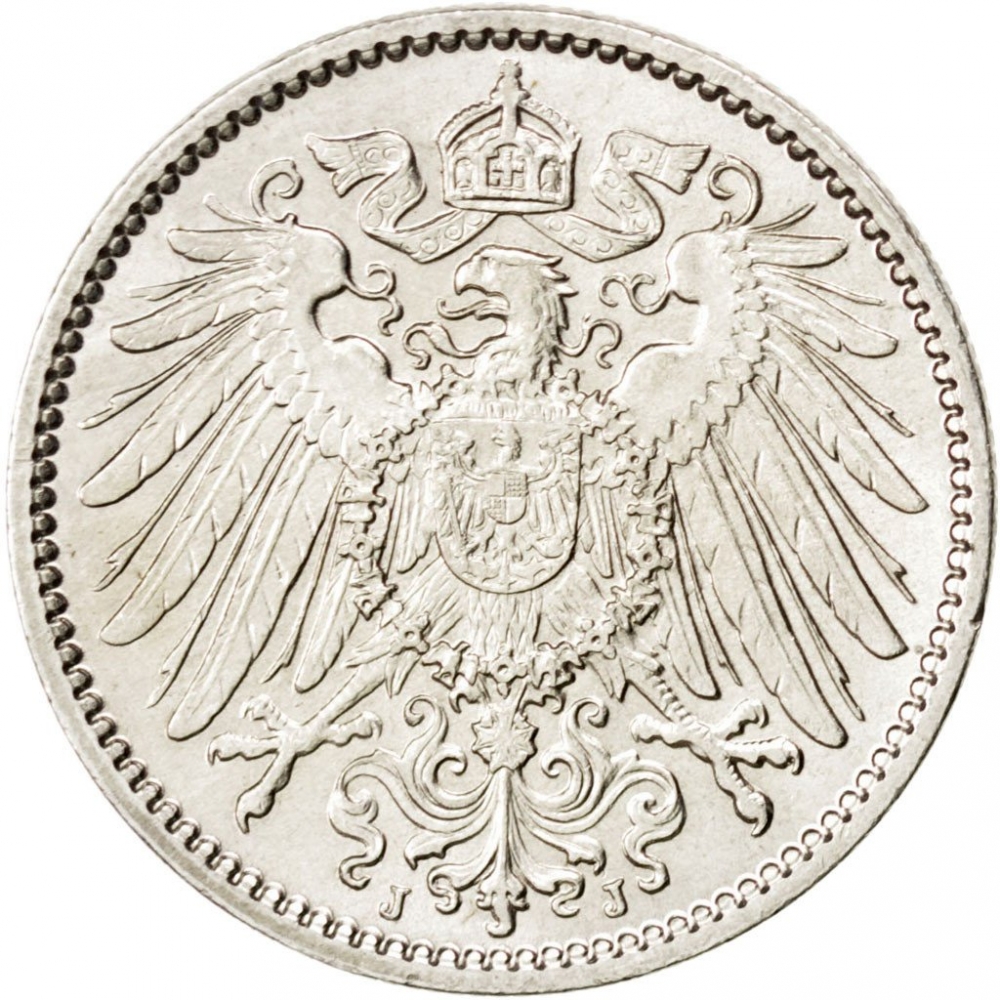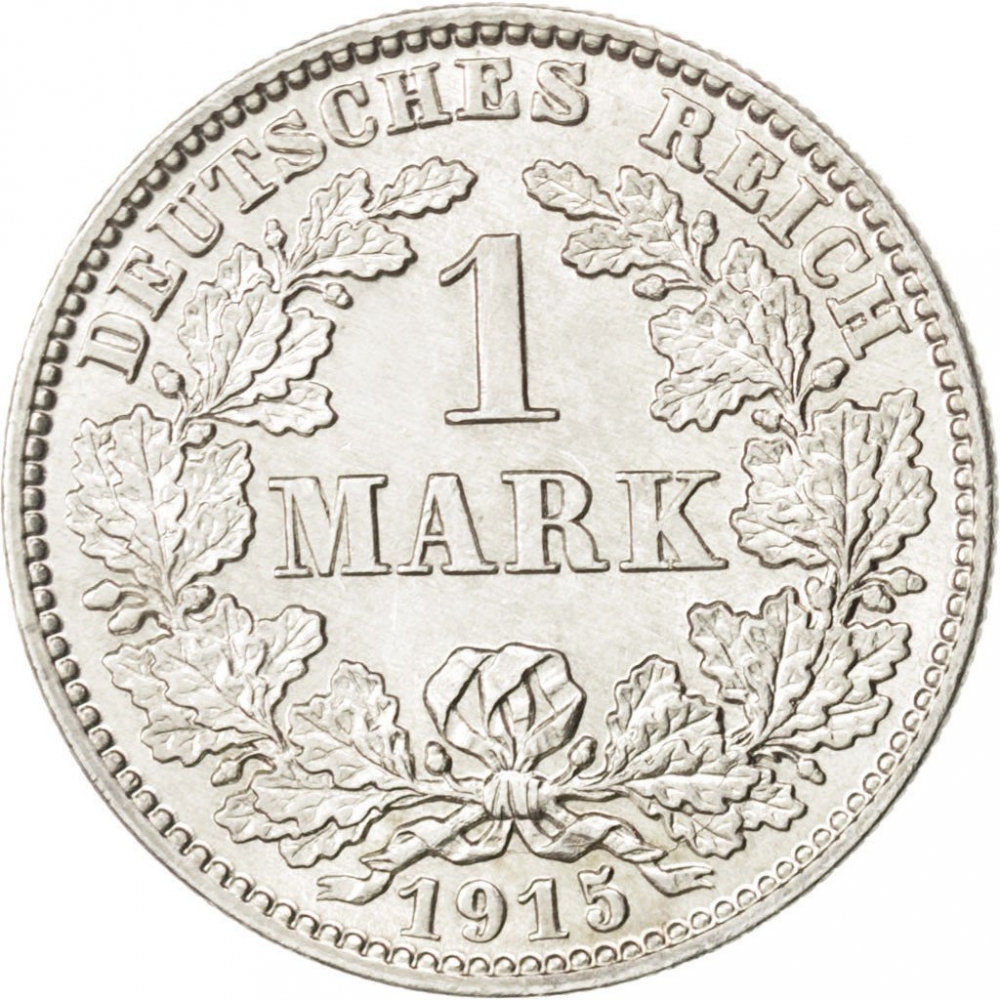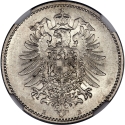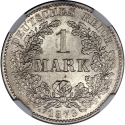You are about to finish your registration. Please check your mailbox (including spam folder). There should be a letter with a confirmation link. Check setting to make sure that your e-mail address is correct.
Send letter again
Obverse

|
The coat of arms of the German Empire (Reichsadler with shield on breast). Mintmarks near edge, below feet of eagle. J J |
|---|---|
Reverse

|
Denomination within ornate wreath, country above, date below. DEUTSCHES REICH |
| Edge |



